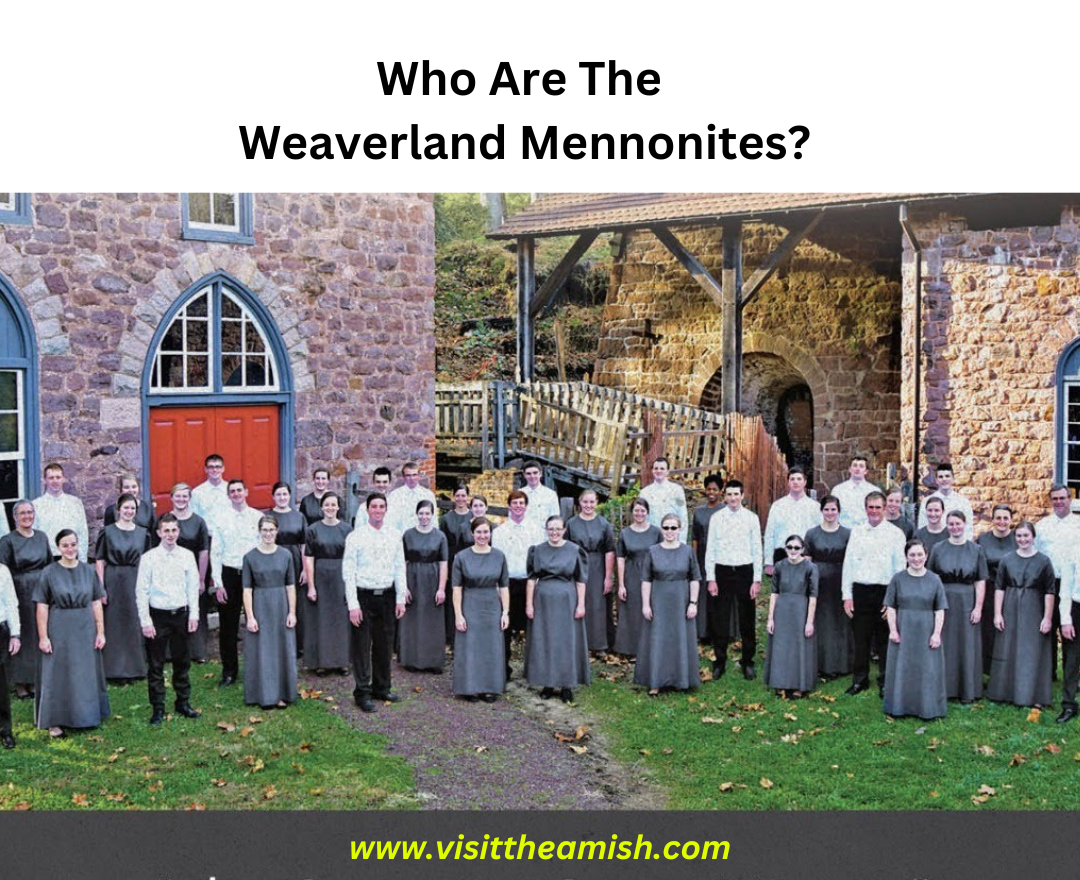The Weaverland group is a subgroup of the Old Order Mennonite community, known for their adherence to traditional Mennonite beliefs and practices. They are often referred to as the “Weaverland Old Order Mennonites” or simply “Weaverland Mennonites”. They are similar to other Old Order Mennonite groups, such as the “black bumper” Mennonites, in that they reject many aspects of modern technology and maintain a more traditional lifestyle.
The Weaverland Mennonites, also known as the Horse and Buggy Mennonites, originated in the late 19th century in Lancaster County, Pennsylvania, USA. They are a subgroup of the Old Order Mennonite church.
One of the defining characteristics of the Weaverland Mennonites is their adherence to traditional Mennonite beliefs and practices. This includes a strong emphasis on community, simplicity, humility, and nonconformity to the world. They also adhere to traditional Mennonite teachings such as adult baptism, nonviolence, and separation from the world.
Another defining characteristic of the Weaverland Mennonites is their rejection of modern technology. Like other Old Order Mennonite groups, they avoid using electricity and automobiles, and often live without modern conveniences such as telephone and internet. They also tend to dress in plain clothing, without ornamentation or bright colors, and limit education to primary education. This is in line with their belief in simplicity and humility and the rejection of modern distractions.
Despite their rejection of modern technology, the Weaverland Mennonites are not isolated from the broader society. They often participate in the local economy and maintain relationships with non-Mennonite neighbors and businesses. However, they do maintain a strong sense of community and tend to rely on each other for support and assistance. They also have close relationships with their church, which is a central part of their community and daily lives.
The Weaverland Mennonite community is known for its strong sense of tradition and continuity with the past. Their beliefs and practices have been passed down through generations, and they continue to maintain a strong connection to their Anabaptist heritage. This continuity with the past is a key aspect of their identity and helps to define them as a distinct subgroup within the Mennonite community.
In conclusion, The Weaverland group is a subgroup of the Old Order Mennonite community known for their adherence to traditional Mennonite beliefs and practices, rejection of modern technology, and strong sense of community. They participate in the local economy and maintain relationships with non-Mennonite neighbors and businesses, but they rely on each other for support and assistance. They dress in plain clothing and limit education to primary education. They also have close relationship with their church which is a central part of their community and daily lives.
Sources:
- “The Weaverland Conference: A Study of a Conservative Old Order Mennonite Group” by J. Howard Kauffman
- “Anabaptist World USA” by Donald B. Kraybill and C. Nelson Hostetter
- “The Riddle of Amish Culture” by Donald B. Kraybill

